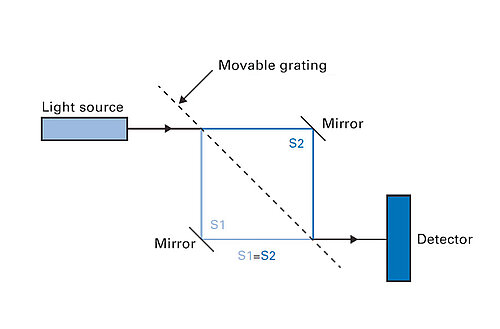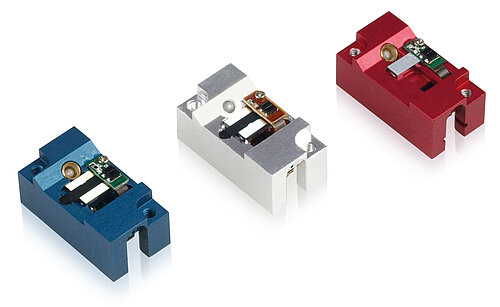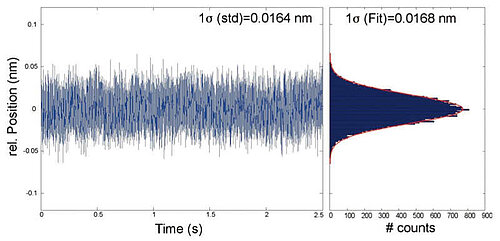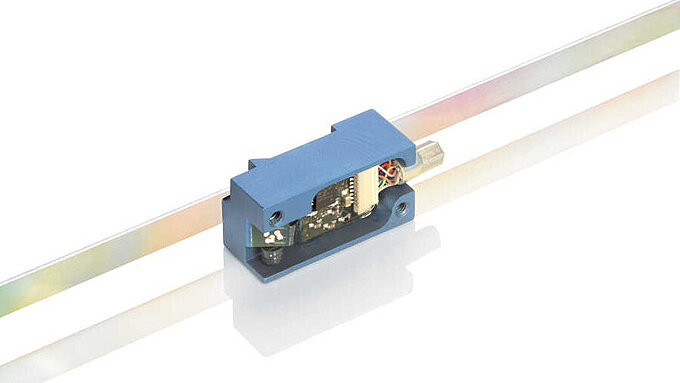Piezo stepping drives or magnetic drives enable high-precision positioning over large travel ranges. However, high resolution and linearity over large travel ranges can only be achieved with highest resolution measuring systems and method.
For conventional nanopositioning with piezo actuators and travel ranges up to 1 mm, capacitive sensors achieve a resolution in the sub-nanometer range and very high stability and linearity. Capacitive measuring systems unfortunately reach their limits for measuring ranges from approx. 1 mm: Resolution and linearity decrease or the size of the active sensor area increases and thus also the required installation space. Incremental position sensors are therefore used for larger travel ranges. However, the linear encoders available on the market are often insufficient for the requirements of nanopositioning mechanics.

Developing the basics as well as their technical realization were both quite challenging tasks. For me as a developer, the result is an exciting combination of optical, mechanical and electronic components functioning as a single product.
Dr. Axel Grabowski
(Head of Sensor Development)
“We developed PIOne because there were no small sensors on the market with a resolution of 1 nm or better," explains Dr. Axel Grabowski, Head of Sensor Development at PI. “Some of the sensors available on the market achieve such resolutions, but are larger than some of our positioning systems and have relatively high power requirements. Therefore, the objective for the in-house development was to realize a small sensor with maximum resolution and moderate energy consumption. With the incremental position sensor PIOne we have succeeded.”
Resolution up to 20 Picometers
The resolution of the incremental sensor, i.e. the smallest measurable displacement of the measuring head relative to the scale, is essentially determined by the length of the signal period of the sensor, the noise of the processing electronics and the electronic interpolation factor of the signals.
However, the level of the interpolation factor is limited by the noise of the signals and cannot be set arbitrarily high. A signal period that is as short as possible is therefore advantageous, allowing for a high resolution even with a lower interpolation factor.
The PIOne sensor achieves a resolution of 20 picometers and better, thanks to its small signal period of 0.5 µm and optimized signal processing. In this instance, interpolation with a factor of 4,000 is possible without any noise.
The sensor head of PIOne contains a Mach-Zehnder interferometer, where the optical paths are equalized and fully symmetrical, compensating for environmental influences such as temperature and humidity.
Since the signals of the PIOne can be processed by different PI controllers, the sensor can be used in positioning systems with different drive technologies.





